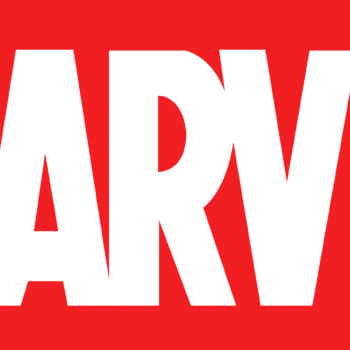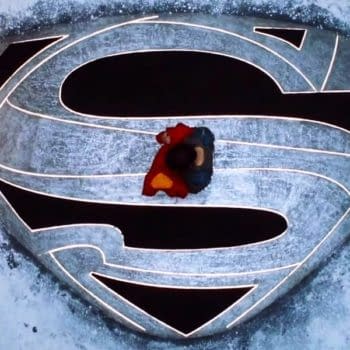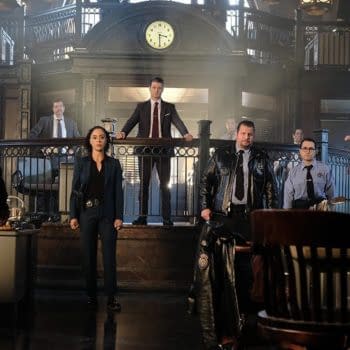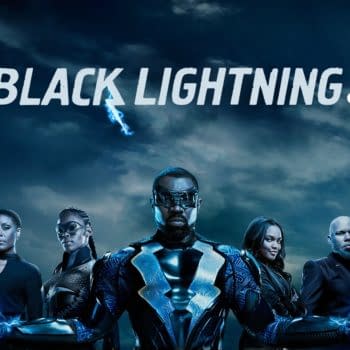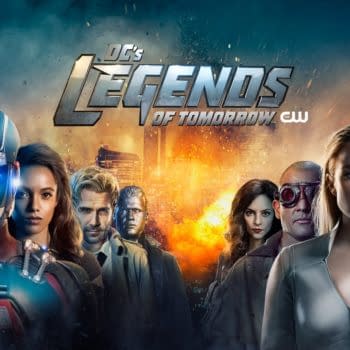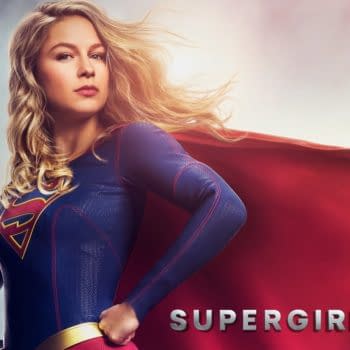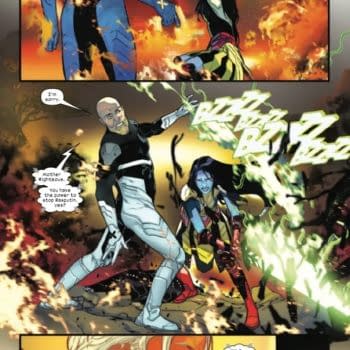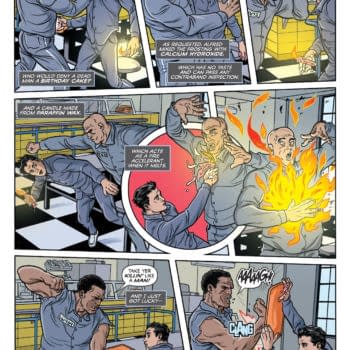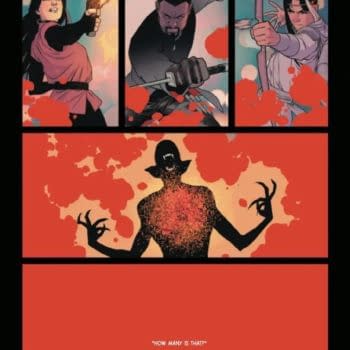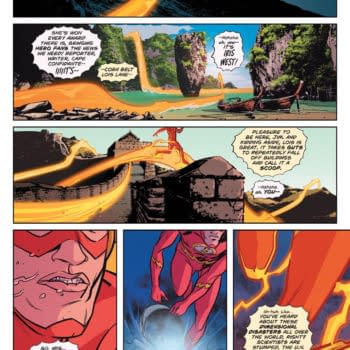Posted in: Comics | Tagged: Clash of Kings, Comics, dynamite, entertainment, game of thrones, george r r martin, HRL, Landry Q Walker
Writer's Commentary: Landry Q. Walker Talks Clash Of Kings #6
Dynamite has given us a writer's commentary from Landry Q. Walker for Clash of Kings #6, part of the Game of Thrones series. The cover is by Mike S. Miller with interiors by Mel Rubi.
Pages 1/2:
The first challenge when adapting George R.R. Martin's books is the most obvious – the sheer volume of material, two chapters limited to 21 pages. On these first two pages, we have to convey several days of travel. Changing landscapes, changing times of day, it helps. So does the act of transposing text from the book as narration to certain sequences. Our editor, Anne Groell, is instrumental in that process. I focus a bit more heavily on creating a comics structure for the artist to work from (I write in very full, detailed script for this series). Anne comes in and restructures things to make sure we hit the most important notes, and really directs the choices with narration. It's a really fun process, involving a lot of storytellers from different aspects of the industry.
Every now and again, I think we get a little repetitive in the descriptive text next to the art – but this is a minor byproduct of this kind of adaptation that I think is necessary to achieve our goals. The end result is a dense fusion of art forms.
Pages 3/4/5:
The colors for this page came in around the time of the massive fires in Northern California. We had just rushed through Santa Rosa to help evacuate my aunt (her house ended up being spared). The smoke was covering the Bay Area. So these pages came in the first pass on colors and everything was bright and colorful. But all that smoke, it makes everything brown and greasy. I don't usually turn in many coloring notes (color blind), but this one I wanted to see reflected on the page. I think the end result is perfect.

Page 6:
I use the rising and setting sun frequently in this series to establish the passage of time. Long shots like panel 3 on this page also really help stretch the sense and weight of time. Also a good trick when you have to break scenes in the middle of a page.
Pages 7/8:
I originally wrote this sequence to stand without any text. I'm glad to have the narration (we really do need to know why Arya is up and walking into the woods at night), but the art really sells this scene. The colors here are some of my favorite.
I originally scripted this as a three-page sequence, and had direction in place so that the start of page two and the end of page three were book end panels. Arya's entrance into the shadowy woods and exit from the same woods mirrored each other.
They still do, and it looks beautiful. But I wish space had allowed to have it frame it at the start and end of two pages, rather than starting in the middle. A small thing.
Page 10:
A small thing, and not limited to this specific issue, but one of my earliest notes for this series was the chapter headings (the names of the characters) at the top of each page. We need a break between sequences. This one was cheated a bit, so as not to ruin the beautiful full bleed splash page. But normally, we run a gap at the top of each scene change like this filled with just the name – as seen back on page 1. It's better for the reading experience to take you out of the story in a literal fashion for just that moment, that lets your brain reset.
Also: The art here – I have no words for this. It's amazing. It's a hard thing to do in this series, to sacrifice an entire page for a splash. My first drafts always have several glorious splash pages set up, and double splash pages too. Unfortunately, my first drafts are often 40 plus pages long. So…
Pages 11/12:
A difficult scene to balance in our limited space. On the ships deck – in the cabin – back on the deck – disembark.
I remember a small note for the dialog on page 11 – The first lettering pass had the last of Theon's dialog on the last panel of page 11 as one balloon. I thought we needed a subconscious beat there to distinguish between Theon's different thought tracks. Otherwise it just kind of runs together. Like most things when creating a comic, it's about crafting the illusion of the passage of time, and something as simple as pacing a word balloon in the right way can make a huge difference – ideally the kind of difference you never notice, but subconscious cues are critical in making a proper comic.
I also prefer to direct the action so that the nudity occurs off panel. Others might have reasons for this beyond my own, but my primary motivation is this: I feel certain things are more powerful when left to the imagination rather than shown. What is strong in prose can become weak when literally displayed. Better to suggest and let the mind fill in the blanks.
Page 13:
Had to cut and stitch a bit to make all of this work in our limited space. I regret that we lose a touch of Theon's deflated homecoming. Would have been nice to see his ego crumble more slowly than we do.
Page 16:
Time was saved by placing Theon in his fine clothes and chain early in the scene, rather than the scene in a room where he chooses the clothing. I did adapt that scene – I adapt the whole thing into comic script form before cutting and shifting things around. It was a great moment that really shows his ego build-up. I'm a broken record here – space costs us. That said, we didn't need the scene. It's a comic, and we do have to try and direct things in the "show don't tell" category.
Pages 17-20:
Much of my work involves trying to imagine ways to stage the scene, and suggest that to [artist] Mel Rubi. Mel is brilliant, he has spot-on instincts in regards to what we can play with and what is more locked in for structure reasons. It would be far too easy for this book to devolve into a talking head narration. Shifting camera angles, changing perspectives, and acting is key. I try to incorporate direction with every panel regarding how a character might be fidgeting or what emotions might be playing out on their face and body language.
In most issues, this means coming up with new and clever ways for people to sit around a table and drink wine. This scene was a gift to work with. The tension between father and son, the fire pit, the necklace, the message. So many props to play with and so much tension to suggest.
In the end though, my panel breakdowns are really just a suggestion. The artist is on the front line of this, and he is the one that pulls it all together and delivers.
Page 21:
I like close-ups on eyes. I use the effect in my stories a lot.






